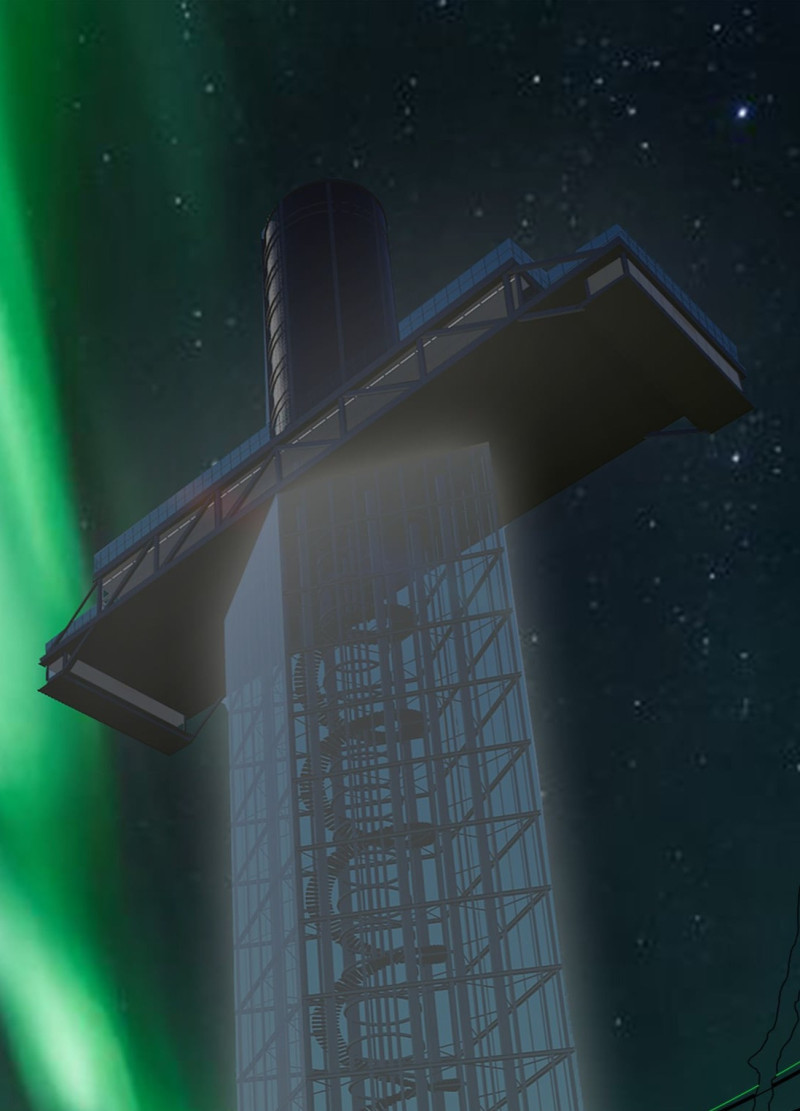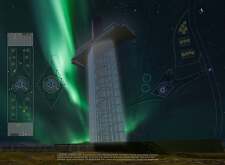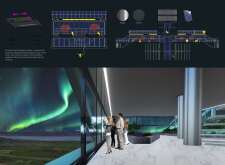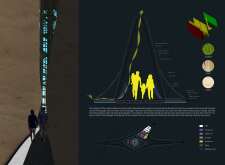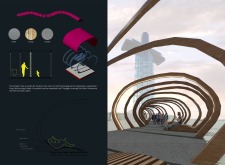5 key facts about this project
"LEGEND TAKES LIFE" combines storytelling with design in a landscape of natural importance. The concept is rooted in a mythical battle between a giant and a dragon. This narrative shapes the structure and influences the way people experience the site. Visitors are drawn not only to explore the building but also to connect with the environment around them.
ARCHITECTURAL LAYOUT
The layout facilitates movement to notable natural features, including the Kvennagjá and Karlagjá caves. Two entrances are positioned for convenience: one near a bus stop, making it accessible for public transport, and the other from a parking area. This setup guides visitors to a reception area where they can choose to visit the caves or engage with the story connected to the sword.
STRUCTURAL ELEMENTS
A prominent feature is the bridge that links two continents, reflecting the sword's impact central to the narrative. This bridge serves both functional and symbolic purposes. It encourages visitors to walk between spaces and fosters a sense of exploration and connection with the landscape.
VISITOR FACILITIES
Essential visitor facilities are included, such as a café, restrooms, storage, an office, and a waiting area. These spaces are designed for comfort and facilitate engagement. The arrangement encourages visitors to spend more time at the site, promoting a thorough exploration of both the narrative and the environment.
MATERIAL UTILIZATION
Materials are chosen for their structural qualities and visual appeal. Travertine is used for the internal skin, which blends with the natural surroundings. Steel plates add strength, while wooden modules bring warmth to the design. The external lichens skin supports sustainability and connects the building with nature. Basalt flooring offers durability and an earthy essence.
Details such as the reception area, designed with ample natural light, create a welcoming space that draws visitors into the experience.


